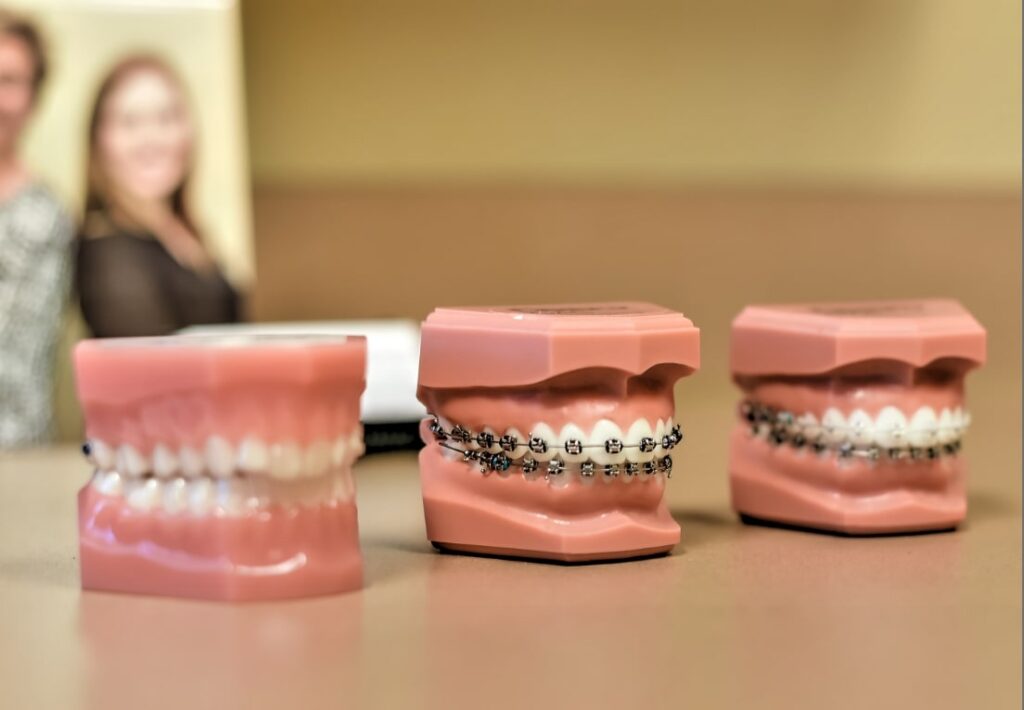Finding the Right Cumming Orthodontist for Your Braces and Aligners Needs
Finding the Right Cumming Orthodontist for Your Braces and Aligners Needs
Blog Article
Comprehensive Guide to Orthodontics Treatments for Fixing Dental Imbalances
Recognizing the intricacies of each treatment, including their devices, advantages, and prospective downsides, is vital in making educated decisions about one's orthodontic treatment. As we browse through the extensive overview to orthodontic treatments for dealing with oral imbalances, the intricate details of each method will certainly unfold, dropping light on the course toward a harmonious and practical dental positioning.
Orthodontic Procedures Overview

Along with standard dental braces and clear aligners, orthodontists might also advise other interventions like headwear, palatal expanders, or retainers to address certain placement problems (cumming aligners). These procedures are customized per patient's special demands and may include a mix of treatments to accomplish the preferred outcomes. Regular modifications and surveillance are vital parts of orthodontic treatment to ensure development gets on track and to make any type of necessary alterations in the process. By undertaking orthodontic procedures, people can not only attain a straighter smile however additionally enhance their total oral health and wellness and function.
Conventional Braces: Exactly How They Work
When thinking about orthodontic treatments for oral misalignments, typical braces stand out as a tried and true approach for correcting teeth positioning. Typical braces consist of brackets, cords, and bands that function together to apply constant stress on the teeth, gradually moving them into the preferred placement.
One key element of how conventional dental braces job is the process of bone makeover. As pressure is applied to the teeth with the dental braces, the bone bordering the teeth is improved to sustain the brand-new tooth positions. This improvement is important for the long-lasting security of the dealt with alignment. Clients will certainly require regular adjustments at the orthodontist's office to make sure the dental braces proceed to use the correct pressure for efficient teeth movement.
Unseen Aligners: Disadvantages and pros
These clear, tailor-made trays are practically unseen when used, making them an appealing alternative for individuals looking for a more cosmetically pleasing orthodontic treatment. People can eliminate the aligners prior to eating or cleaning their teeth, decreasing the threat of food getting stuck in the appliance and simplifying the cleaning procedure.

Surgical Orthodontic Options
Surgical interventions in orthodontics present sensible choices for dealing with complicated dental misalignments that might not be properly resolved via standard orthodontic therapies. While standard braces and undetectable aligners can correct many orthodontic issues, particular instances call for medical intervention to accomplish optimal results. Surgical orthodontic options are typically recommended for severe malocclusions, significant jaw disparities, and situations where the underlying bone structure requires adjustment to achieve correct positioning.
One typical medical orthodontic treatment is orthognathic surgery, which entails repositioning the jaws to correct useful problems such as difficulty eating or speaking. This surgery is usually done in collaboration with an orthodontist that assists straighten the teeth before and after the treatment. Surgical orthodontics may additionally involve treatments to expose influenced teeth, remove excess periodontal tissue, or improve the jawbone to produce an extra harmonious face profile.
Prior to thinking about surgical orthodontic alternatives, home clients undergo a comprehensive analysis to establish the requirement and possible advantages of such interventions. braces. While surgical procedure may appear difficult, it can significantly enhance both the feature and visual appeals of the smile in instances where standard orthodontic therapies fall short
Retainers and Post-Treatment Care

Post-treatment treatment entails adhering to the orthodontist's instructions vigilantly. This might consist of appropriate dental health techniques, participating in follow-up appointments, and wearing the retainers as prescribed. Failure to adhere to post-treatment care directions in network dentist can cause regression, where the teeth progressively relocate back in the direction of their initial positions. Regular retainer wear, great oral hygiene, and routine dental check-ups are vital for preserving the results accomplished with orthodontic surgical treatment and making sure the lasting security of the remedied dental alignment.
Final Thought
Finally, orthodontic treatments use different options for dealing with dental misalignments. Typical dental braces use steel braces and cables to shift teeth into correct positioning. Unnoticeable aligners give an even more discreet alternative yet might not appropriate for all instances. Surgical orthodontic options are readily available for extra extreme misalignments. Retainers are frequently used post-treatment to preserve the brand-new alignment. Generally, orthodontic treatments can effectively boost dental health and visual look.
As we navigate through the detailed overview to orthodontic procedures for remedying dental misalignments, the complex information of each method will certainly unravel, shedding light on the path towards a harmonious and practical dental positioning. - cumming braces
One of the most common orthodontic treatments is the usage of dental braces, which consist of steel braces and cords that apply mild stress to progressively shift teeth into the preferred setting.When considering orthodontic treatments for dental imbalances, traditional braces stand out as a reliable approach for correcting teeth positioning. Additionally, invisible aligners might not be ideal for intricate orthodontic issues that require more significant teeth movement, as they are generally suggested for mild to moderate cases. Retainers are customized orthodontic devices designed to hold teeth in their corrected positions after the completion of orthodontic therapy.
Report this page